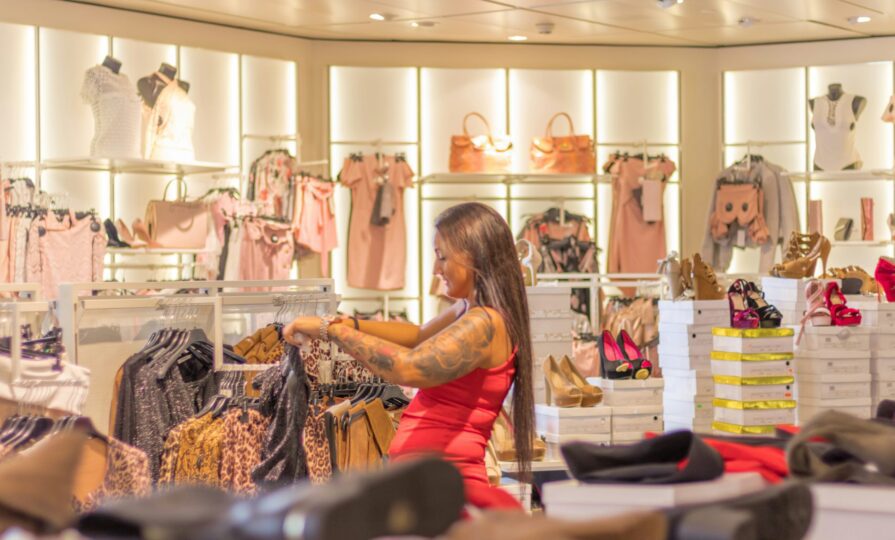Five ways to enhance in-store experience

Customers’ in-store experiences are thought to act as triggers for their purchasing decisions. Therefore, developing a genuinely distinctive retail customer experience could be the difference between getting new customers and slipping into the background in a highly competitive industry like retail.
Consumers today seek for remarkable experiences rather than just products to purchase. A unique and interesting in-store experience helps you stand out from the competition and has a big impact on whether a consumer decides to come back. It’s also an effective method for enhancing the identity of your brand. Improving the in-store experience for customers is an opportunity to provide something that websites cannot.
Listed below are five ways to enhance customer’s in-store experience
Ambiance and store layout:
Setting the tone and atmosphere for a customer’s shopping experience is mostly dependent on the store’s ambiance. Customer perception is influenced by space organisation, lighting, fragrances, and general cleanliness. A welcoming and comfortable environment tempts clients to spend more time browsing and remain longer.
A well-planned store layout also makes sure that customers can move throughout the area with ease. This entails accessible product displays, unambiguous signage, and a smooth transition from the entryway to the checkout. A well-designed layout facilitates shopping and efficiently draws attention to important items and deals.
Customer service
While this may seem apparent, retailers need to concentrate on delivering exceptional customer experiences that make customers happy and want to come back, in addition to just selling things. During the pandemic, as online sales soared during the many lockdowns, so did customers’ frustrations of struggling to reach an actual human being regarding issues with products and services. Now more than ever, customers are yearning for the simplicity of in-person communication and having issues resolved and inquiries addressed.
As a result, every retailer must ensure exceptional customer service. This includes being responsive to customer inquiries, resolving customer complaints quickly and efficiently, and providing a positive shopping experience. For instance, UK supermarket chain Booths decided to ditch its self-checkouts in the majority of its stores as it believes that colleagues serving customers delivers a better customer experience.
Immersive technology
For brands, it is becoming more and more crucial to blur the boundaries between online and offline. Brands are able to give customers entertaining, distinctive, in-person experiences that take shopping to new heights by focussing on immersive retail experiences that make use of technology. Shoppers may now explore and engage with items because of technologies like segmented reality, smart mirrors, and interactive digital signage. For example Nike, whose concept store in New York, Nike House of Innovation, uses app data to provide products and services including access to seasonal exclusives, one-on-one styling, and the option to build personalised products that are only available to NikePlus members.
Another tool that can be utilised to improve the customer experience is virtual reality (VR). To construct technologies that customers might not have at home, product recommendations can be connected to virtual reality in-store. People may experiment with a significantly greater variety of styles in virtual fitting rooms than they might if they had to try on garments in person. Smart mirrors with RFID technology can be used to create interactive fitting rooms and personal experiences like shade matching cosmetics. The mirror can display suggested accessories, sizes, and colours on a touchscreen and allow users to share the results on social media.
Zalando is one such retail and lifestyle brand that piloted a virtual fitting room experience allowing customers to create a 3D avatar by inputting their height, weight and gender. For a selected range (23) of jeans from different brands, which is one of the most challenging categories in terms of finding the right size, they can see how different sizes would fit them, with a heatmap indicating where the item sits tight or loose on the avatar they created.
Personalisation
Online retailers and small enterprises have easy access to personalisation. Clients typically expect staff members to be able recognise them and provide personalised advice based on their preferences and requirements. This leads to familiarity and customisation, which in turn results in increased sales and customer loyalty as well as consumer engagement.
Using technology is a wonderful way to accomplish this in sites with multiple retailers, as it enables you to study the customer’s most recent purchases in-person and recommend new trends tailored to their requirements. Every client may also be assigned, if at all feasible, a particular vendor. The physical space’s design is an additional component of customisation that needs to be distinctive. It must be a unique experience for customers to enter your store compared to others.
Branded music
Connecting with your customers on an emotional level can be the difference between a good in-store retail experience and a great one. Music is one of the simplest ways to do this, helping you to easily create a memorable experience for your customers. A study by Mood Media showed that music is a top factor in lifting one’s mood in-store, with 85% of consumers saying music has a positive impact on their experience. The right music increases shoppers’ dwell times, which in turn increases basket sizes and sales, and their likelihood of returning to that particular store.
Research has also shown that certain music-oriented elements, such as tempo, volume, and genre, can also significantly impact customers’ in-store experience. No matter the industry, or size and scale of business, the right mix of music can create a sense of ambiance that makes the store more inviting and enjoyable to shop in. Dr Carl-Philip Ahlbom, from the University of Bath’s School of Management, says: “During the week people are short of time and many get their grocery shopping done after a full day at work. Pleasant music appears to have a mentally soothing effect which impacts the way people shop. At the weekend people are essentially happier, and so the positive power of music is less noticeable.”











